The Charming beauty of Munnar is not a new thing to write upon. When the British visited Munnar, they found one more thing other than the soothing climate. It was none other than the magic of Munnar for Tea plants. Rest is history.
The 160 year old tea plantation in Kolukkumalai is still young and healthy. The World’s highest orthodox tea plantation has given the finest quality of tea leaves. The Kannan Devan plantations and others in and around Munnar are the most commonly heard in a visit to Munnar. One will not hear a fact that, one of the offices of the Kannan devan was an important railway station in Munnar about a 100 years back.
Munnar Before 1924
The English men found reached Munnar on the year 1790. Very few native families were present during that time who were distributed in the Kerala and Tamil Nadu part of now. Soon, the advent of Tea plantations started in Munnar.
By the year 1880, when the Kannan Devan plantations were started, around 50 acres of land in the Parvathy Hills were already converted to tea estates. The Parvathy Hills tea estate now forms part of the Seven Mallay estate
Once it was found that the climate and soil of Munnar is the best for tea plantation, the booming of tea estate started. The munnar town prospered well with this. Considered as the Switzerland of Asia at that time, the British made sure the beauty and advantages of Munnar is well used.
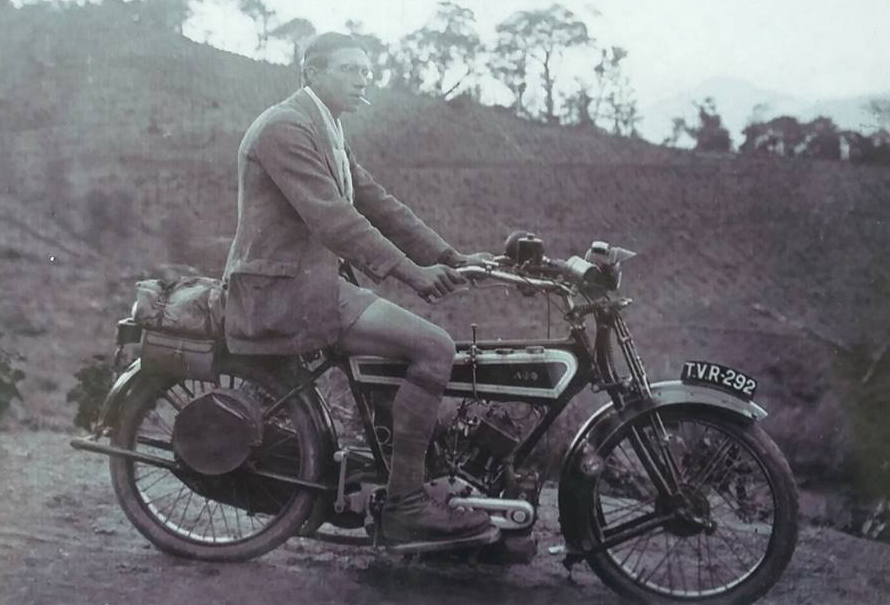 EH Francis on his way to take charge as Assistant Manager , Kannan Devan Hills Produce Ltd in 1911.He was the Genera Manager of Kannan Devan company during the time frame 1937 ~ 1945. This is considered as the first motor bike ride to Munnar in the history.
EH Francis on his way to take charge as Assistant Manager , Kannan Devan Hills Produce Ltd in 1911.He was the Genera Manager of Kannan Devan company during the time frame 1937 ~ 1945. This is considered as the first motor bike ride to Munnar in the history.
They constructed a mono rail between the top station and the Munnar town for easy movement of Tea powder by the year 1902. It gradually changed to a 2 feet narrow gauge lane which transported the goods to Kottagudi. From Kottagudi, it was transported to Tuticorin port and eventually to Britain.
Movement of tea leaves from various estates to Munnar was a concern and the East India company resolved this by bringing in bulls from Britain. A veternery surgeon and 2 assistants were also bought and a cattle shed was formed. This was further expanded to a cattle farm which paved the way for the famous Indo swiss farm of Mattupetty.
The 1924 Floods ( The Great flood of 99 )
The splendor growth of Munnar met with a nasty twist in the 1924 floods. It was also called the flood of 99 as it happened in the Malayalam calendar year 1099. Recorded as the most devastating floods to have occurred in the state of Kerala, the flood of 99 left behind a terrible mark in the Munnar’s history.
The heavy downpour of Monsoon is a common characteristic of Kerala’s climate. But during the months of July and August of the year 1924, it became devastating. The continuous downpour for 3 weeks left the state with heavy floods in all the low lying areas. The Malabar and Central travancore regions were equally affected as well. But no one ever wondered that a flood will occur in Munnar, situated above 6000 Feet from sea level.
The reason for water rise in Munnar can be called as a serious of events done by the nature itself. The little known information about the causes makes sense to some extend. Due to heavy rain, a large number of trees and rocks came down from the hills and formed a bund or embankment in between 2 hills at Mattupetty.
As the rains further intensified, the bund broke off and with that came the huge volume of water and other debris which was blocked. This caused severe destruction to the Munnar town.
Another tragedy occurred down below in Pallivasal. Heavy rains and floods resulted in the destruction of a natural reservoir which was formed in the hills above Pallivasal. The result was that, Pallivasal town was no more. The hydro electric power station built for supplying electricity to Munnar town was buried off and the area around Pallivasal got reshaped.
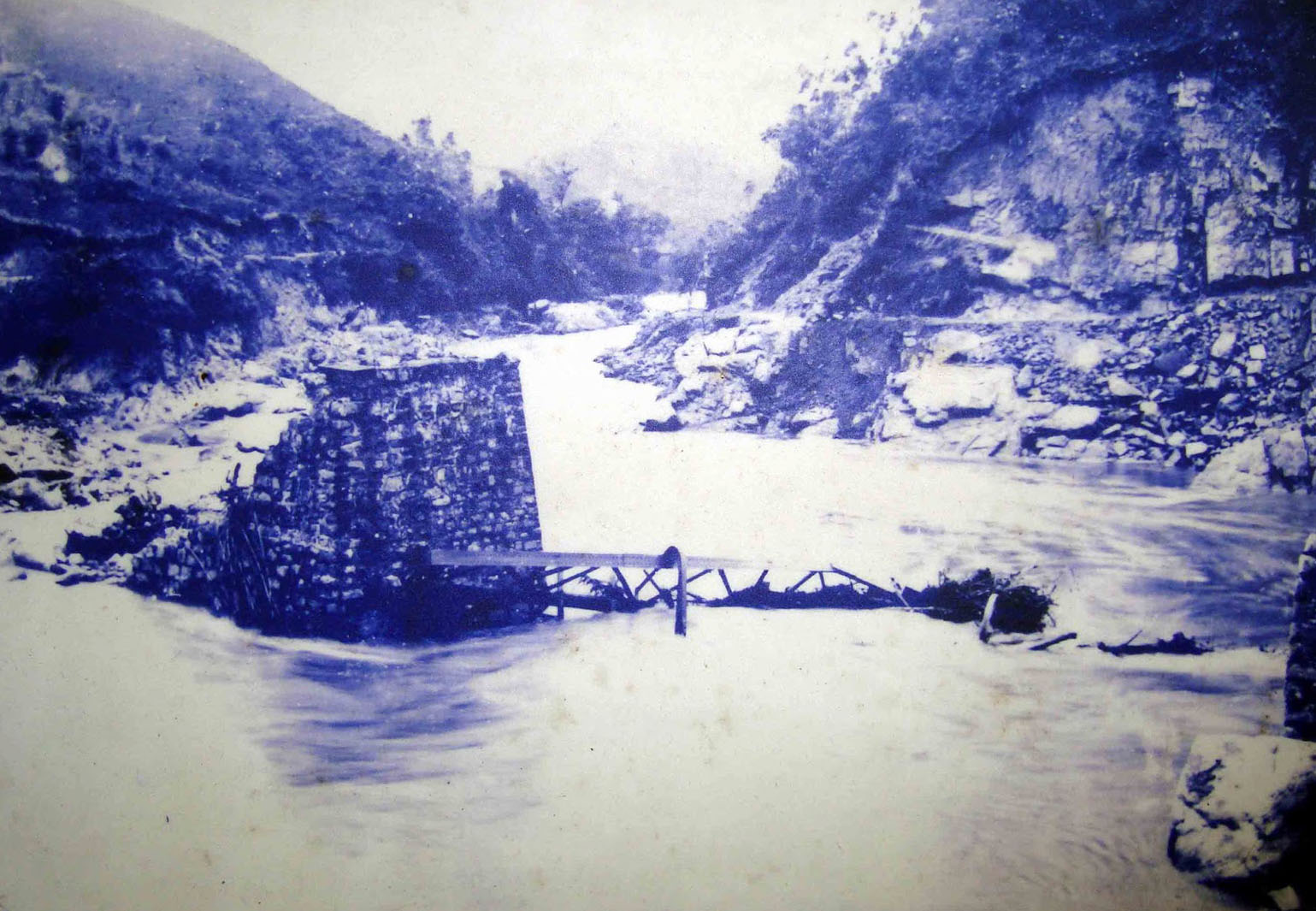 The completely destroyed roads in flood
The completely destroyed roads in flood
The month of July witnessed around 172 inches of rains in Munnar. It was much higher than the what the rail network of Munnar could withstand. The flooding of Munnar caused the entire railway track to vanish along with most of its other structures as well.
What happened to Kundala Valley Railway Station ?
Kundala Valley Railway was built in 1902 and operated between Munnar and Top Station in the Kannan Devan Hills of Kerala . This railway was built to transport tea and other goods. Initially a cart road was cut in 1902, then later replaced by a monorail goods carriage system along the road leading from Munnar to Top Station for the purpose of transporting tea and other products from Munnar and Madupatty to Top Station.
This monorail was based on the Ewing System and had a small wheel placed on the track while a larger wheel rested on the road to balance the monorail.
Great flood of 99 completely destroyed the Kundala Valley Railway in 1924, and the line was never rebuilt.After the loss of the railway, a network of ropeways was used to ensure speedy transportation of tea and other products.
The Munnar Railway Station building still stands, now housing the regional office of Tata Tea. The railway tracks have been replaced by a road in front of this building.Aluminium Bridge near Munnar was once a railway bridge on the line, but it has since been converted to road traffic.
Several remains of wheels, tracks, sleepers, stations, signboards, etc. exist at several part of Munnar and Kunadala Valley, notably at Top Station in Theni district Tamil Nadu.
The town of Munnar was rebuilt once more by the British after the flood of 99. It also developed to a wonderful tourist destination as well. The railway network however was left to the History.
All image credits – Google Images


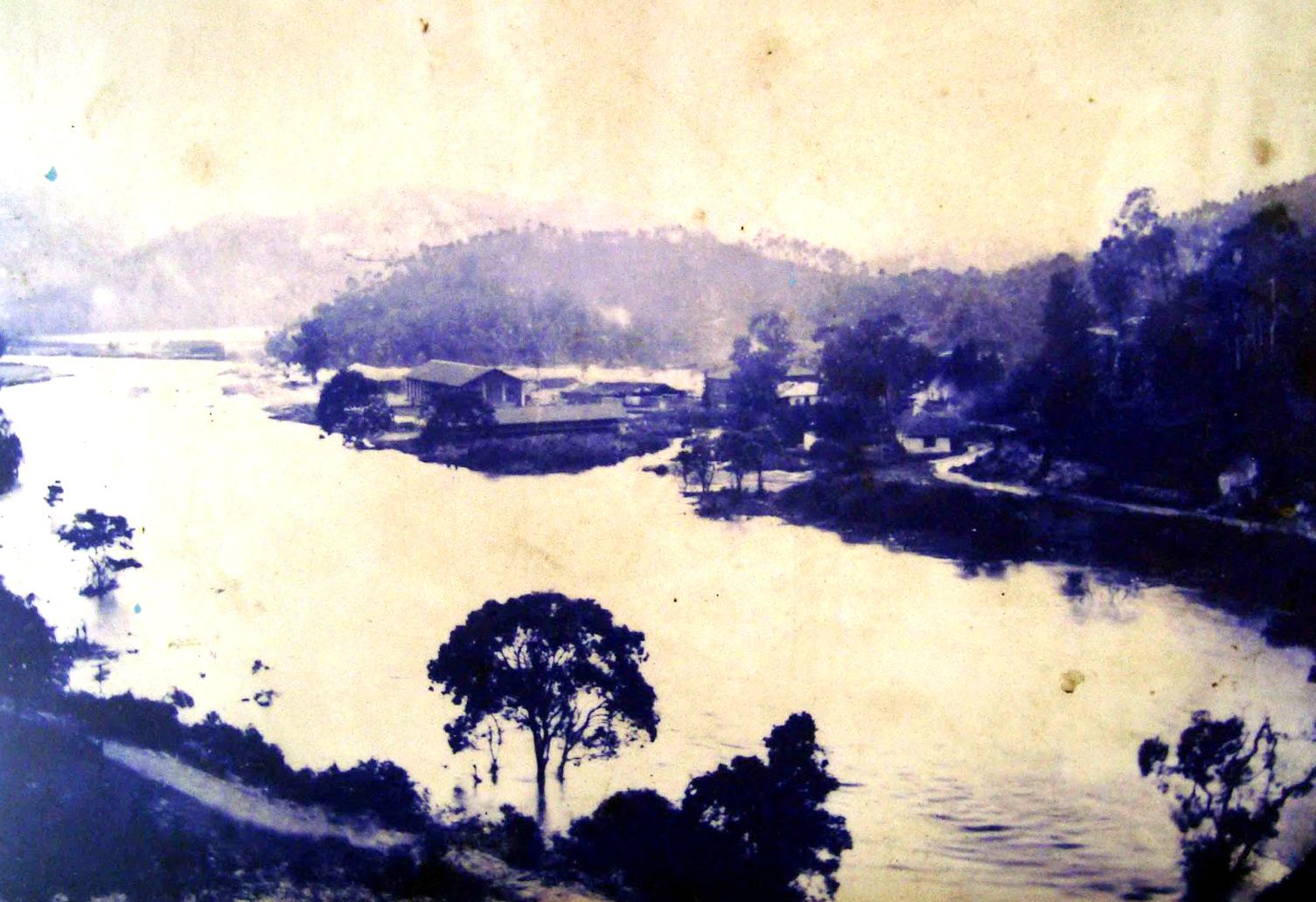
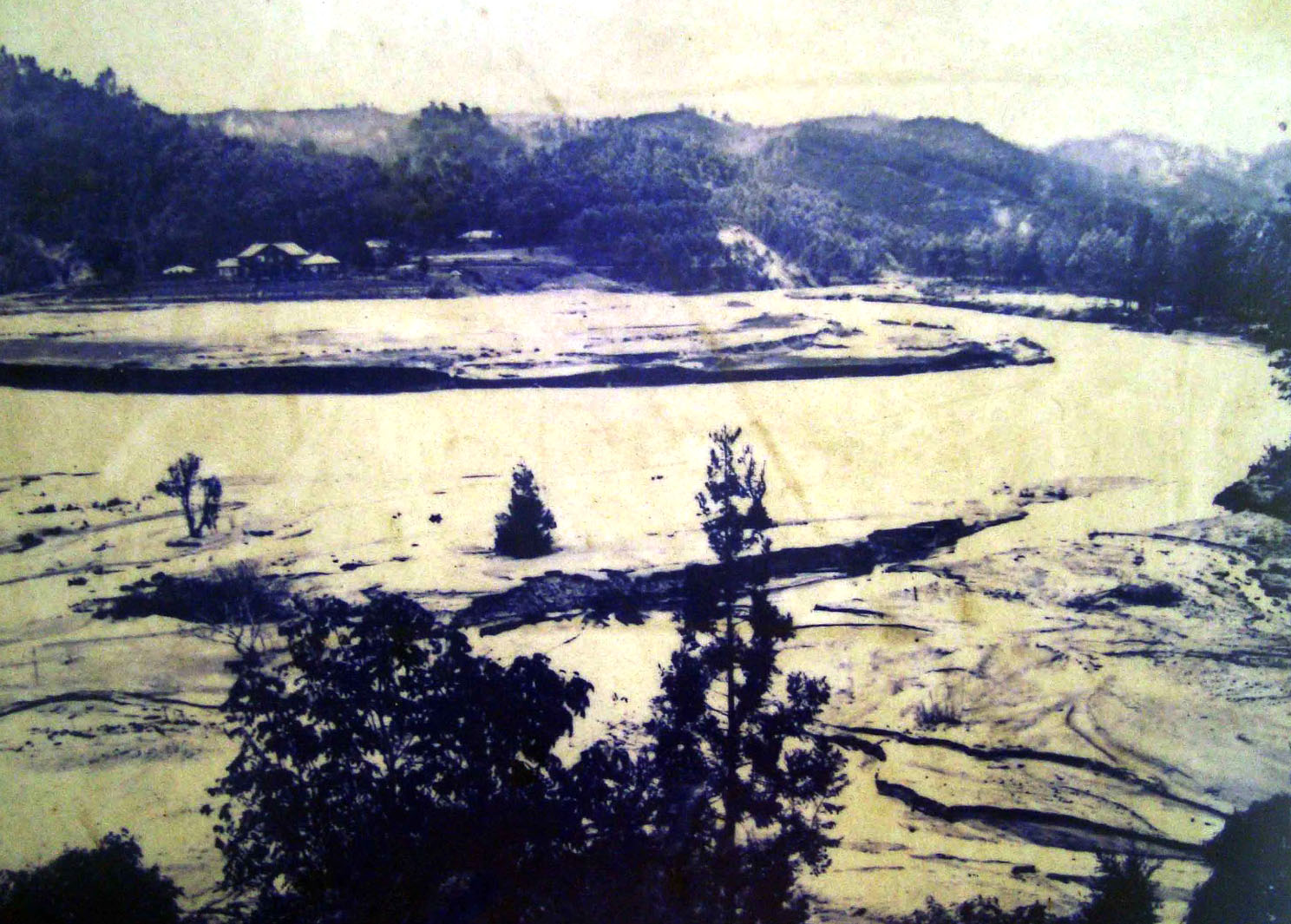
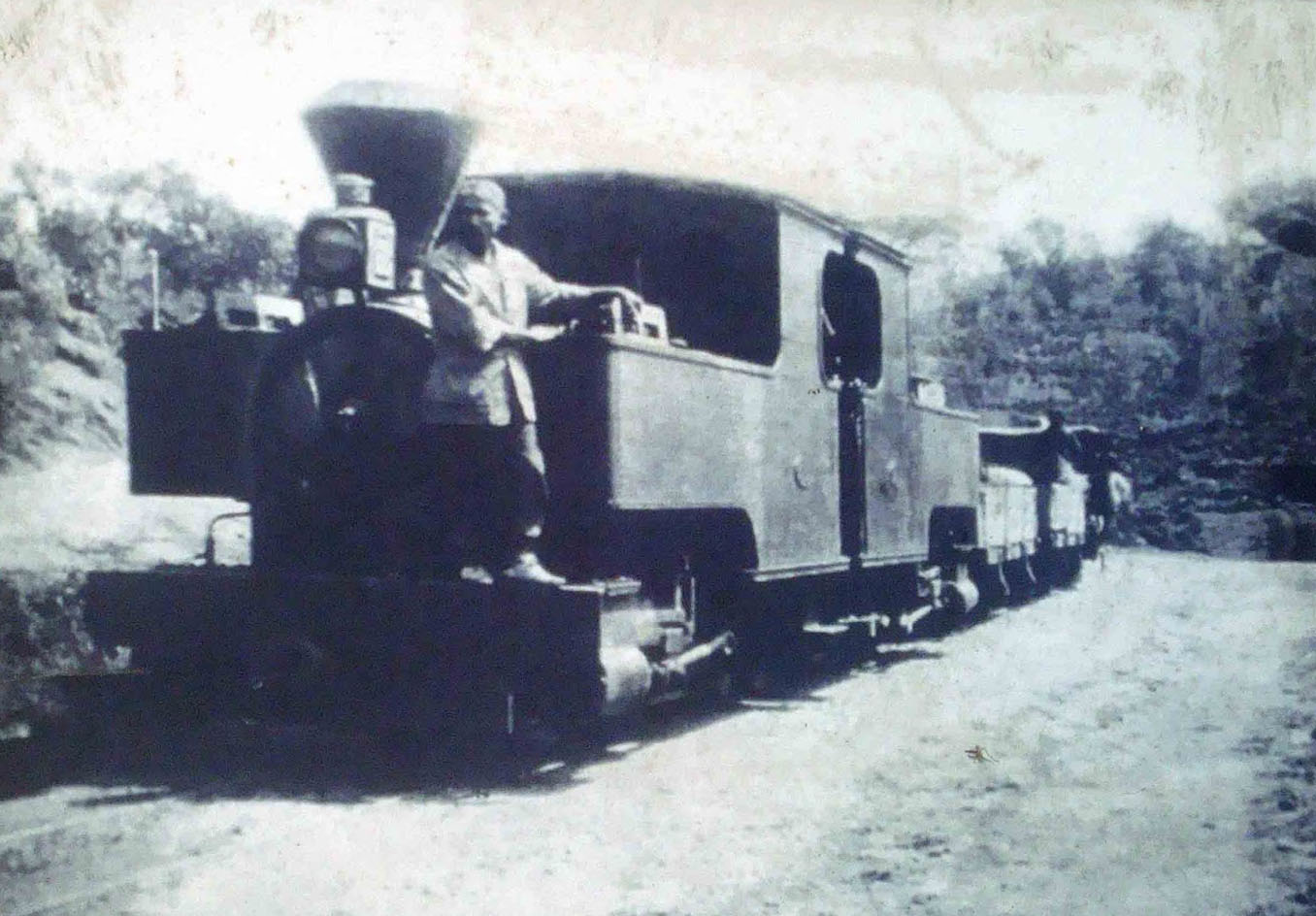
Pingback: The State of the Railways in Kerala: New Railway Lines – 24 Coaches